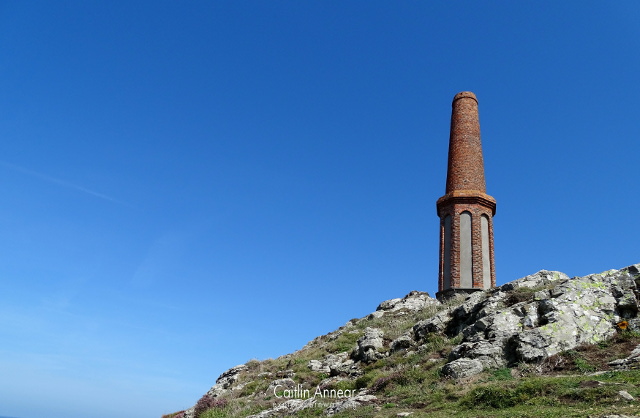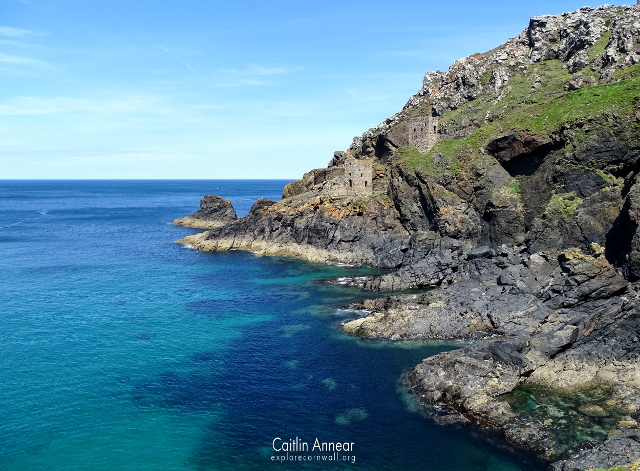This walk starts at the National Trust Cape Cornwall carpark. Head out onto the road and through the gate opposite, this will lead you across a field past St Helen’s Oratory; this is an early Christian chapel with its fourth century cross. Past the chapel, follow any of the paths up to the famous Cape Cornwall mine stack.

This stack is all that remains of the mine, erected in the 1850’s. In 1987 the Cape was bought by Heinz to celebrate their 100 year anniversary who later gave it to the National Trust. Retrace your steps back to the main road and head up to sign posted coastpath that winds it way down into the Kenidjack Valley below.

At the bottom of the valley is where you can find the remains of the Kenidjack stream works, take a right and you’ll soon come to an overgrown path up to the consolidated buildings. Many of these are now covered with copious amounts of brambles, but not enough that you can’t appreciate the beautiful arsenic works and mills.

Follow the path back and take a detour to the bottom of the valley to see the giant water wheel and engine house remains of Boswedden mine. The valley ends at Porthledden Cove with its wonderful smooth rocks.
Retrace your steps up the slope until you reach a footpath on the left-hand side. This steep path goes up to Kenidjack Head, which was once home to an ancient cliff castle with remains of ramparts and hut platforms still in place. More recent additions include Wheal Castle mine with its own shafts and engine house before it was amalgamated with Boswedden.
In 1908, the purser of West Wheal Owles mine had rifle ranges built on the site which can still be seen today. The store used on the range is the more prominent feature on the headland.

From the store, go north up the coastpath towards the engine houses in front of you. The first that you’ll reach is the Wheal Edward stamps house, followed by the Wheal Owles pumping engine.

Keep on the path to take in the beautiful sight that is the Crown’s engine house of Botallack mine.

On the way back, you can either follow the coastpath back to Cape Cornwall, or do as we did and take the path near Wheal Grouse multipurpose engine house. Head back to Wheal Owles engine house (you may recognise it from Poldark) and instead of following the path take a left up towards the Wheal Drea engine house. Once you’ve passed this and the pretty farmhouse next to it, take a right down the narrow country path that heads across a field.

At the end of this path climb over the stile and on the left you should be able to spot the Wheal Grouse engine house; while we were there it had some scaffolding around the back. To head back to the lane opposite the stile and follow this down into the Kenidjack valley. Eventually you’ll come to the path you took down from Cape Cornwall and can head back to the carpark.
The whole walk is on public footpaths. Some of these are not suitable for those with mobility issues.
There are toilets and places to buy food and drinks at the Cape Cornwall and Botallack sites.
There is parking at both Cape Cornwall and Botallack.
Brown, K. and Acton, B. (2007) Exploring Cornish Mines: Volume One. 4th edn. Truro: Landfall.
Nance, D. and Brown, K. (2014) A complete guide to the engine houses of West Cornwall. Gloucestershire: Lightmoor Press.
Scolding, B. (2016) Fiver Circular Walks on the Tin Coast. National Trust.



